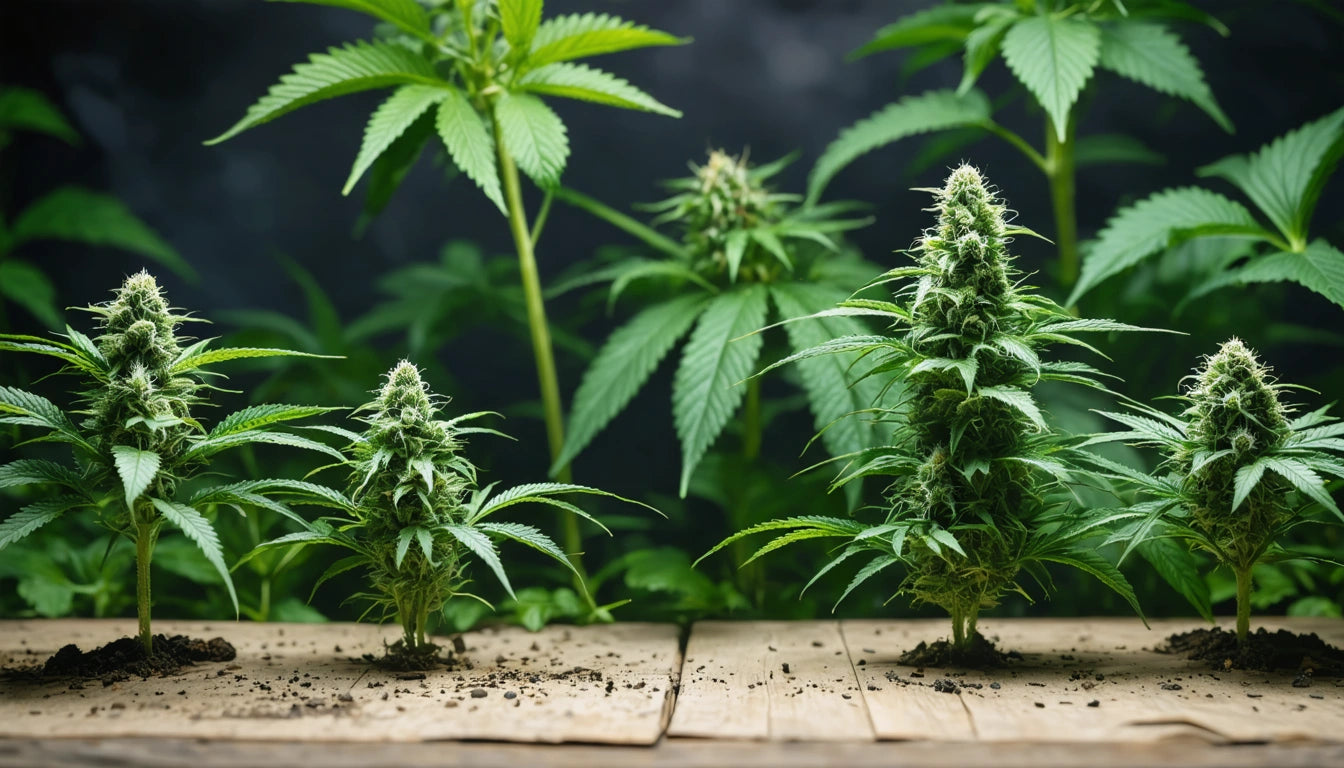Table of Contents
Comparing Hemp-Derived THC and Marijuana-Derived THC: Key Differences Explained
The cannabis industry has evolved significantly in recent years, creating a complex landscape of products derived from both hemp and marijuana plants. While both plants belong to the Cannabis sativa species, the THC (tetrahydrocannabinol) derived from each source has distinct characteristics, legal implications, and effects. Understanding these differences is crucial for consumers, businesses, and regulators navigating this rapidly changing market.
Botanical Classification: Hemp vs. Marijuana
Hemp and marijuana are both varieties of the Cannabis sativa plant, but they differ significantly in their composition and cultivation purposes. According to this comprehensive comparison, hemp is legally defined as cannabis containing 0.3% or less THC by dry weight, while marijuana typically contains much higher THC concentrations.
Hemp has traditionally been grown for industrial purposes such as fiber, seed, and oil production. It features tall, sturdy stalks with fewer flowering buds. Marijuana, conversely, is cultivated specifically for its psychoactive properties and medicinal benefits, with dense, resinous flowers containing high THC levels.
Chemical Composition and THC Content
The chemical profiles of hemp and marijuana differ substantially, particularly regarding cannabinoid ratios:
- Hemp typically contains high levels of CBD (cannabidiol) and very low THC (under 0.3%)
- Marijuana varieties often contain 15-30% THC with varying CBD levels
- Hemp-derived THC is chemically identical to marijuana-derived THC at the molecular level
Despite being molecularly identical, hemp-derived THC products often contain different ratios of minor cannabinoids and terpenes compared to marijuana-derived products. These differences in the entourage effect can result in varied user experiences.
Legal Status and Regulatory Framework
The legal distinction between hemp-derived THC and marijuana-derived THC represents one of the most significant differences between these products:
Hemp-Derived THC Legal Status
The 2018 Farm Bill federally legalized hemp and hemp derivatives containing less than 0.3% THC. This created a legal pathway for hemp-derived cannabinoids, including CBD. However, the legislation created ambiguity around hemp-derived Delta-8 and Delta-10 THC, which are often produced through chemical conversion of CBD.
Marijuana-Derived THC Legal Status
Marijuana-derived THC remains federally illegal as a Schedule I controlled substance, though many states have established medical or recreational marijuana programs. This creates a patchwork of regulations across the country.
For businesses operating in this space, proper packaging and labeling are essential for compliance. Many companies utilize child-resistant packaging solutions to meet regulatory requirements for both hemp and marijuana products containing THC.
Potency and Effects on Users
The potency and effects of THC products vary based on their source:
Marijuana-Derived THC Effects
Traditional marijuana-derived THC products typically deliver more predictable effects due to their established production methods and well-documented strain genetics. Users often report stronger psychoactive effects, which can include:
- More pronounced euphoria
- Stronger body sensations
- More potent therapeutic effects
Hemp-Derived THC Effects
Hemp-derived THC products, particularly those containing Delta-8 or Delta-10 THC, often produce milder psychoactive effects compared to traditional Delta-9 THC from marijuana. This comparison of cannabinoids explains how these compounds interact differently with the body's endocannabinoid system.
The entourage effect also plays a significant role in the overall experience. Hemp-derived products may contain different terpene profiles and cannabinoid ratios than marijuana-derived products, potentially resulting in different therapeutic benefits.
Production Methods and Extraction Techniques
The production methods for hemp-derived and marijuana-derived THC differ substantially:
Marijuana-Derived THC Production
Marijuana-derived THC is typically extracted directly from high-THC cannabis flowers using methods such as:
- CO2 extraction
- Hydrocarbon extraction (butane, propane)
- Ethanol extraction
These methods preserve the plant's natural cannabinoid and terpene profile.
Hemp-Derived THC Production
Hemp naturally contains minimal THC, so hemp-derived THC products (particularly Delta-8 and Delta-10) often involve additional processing steps:
- Extraction of CBD from hemp
- Chemical conversion of CBD to Delta-8 or Delta-10 THC
- Additional refinement and testing
This conversion process is more complex and has raised questions about whether such products truly qualify as "hemp-derived" under current regulations. This resource on THC provides more details on these extraction and conversion methods.
Market Applications and Product Development
The different legal statuses and properties of hemp-derived and marijuana-derived THC have led to distinct market applications:
Marijuana-Derived THC Market
Products in state-legal marijuana markets typically include:
- Flower for smoking or vaporizing
- Concentrates (wax, shatter, live resin)
- Edibles and beverages
- Topicals and tinctures
These products are sold through licensed dispensaries with strict tracking requirements.
Hemp-Derived THC Market
Hemp-derived THC products have emerged in a wider variety of retail channels, including:
- Online direct-to-consumer sales
- CBD shops and health stores
- Convenience stores and gas stations
- Specialty hemp retailers
This broader availability has created both opportunities and challenges for the cannabis industry as a whole.
Future Regulatory Landscape and Industry Evolution
The distinction between hemp-derived and marijuana-derived THC continues to evolve as regulations develop. Several trends are likely to shape the future:
- Increased regulatory scrutiny of hemp-derived THC products
- Potential federal rescheduling of marijuana-derived THC
- Standardization of testing and labeling requirements across both categories
- Growing consumer education about the differences between product types
As the industry matures, understanding the nuances between these product categories will become increasingly important for businesses and consumers alike. The scientific understanding of how CBD and THC interact continues to evolve, potentially leading to more sophisticated product formulations in both categories.
Whether derived from hemp or marijuana, proper packaging, testing, and labeling will remain essential components of responsible product development and marketing in this dynamic industry.











Leave a comment
All comments are moderated before being published.
This site is protected by hCaptcha and the hCaptcha Privacy Policy and Terms of Service apply.